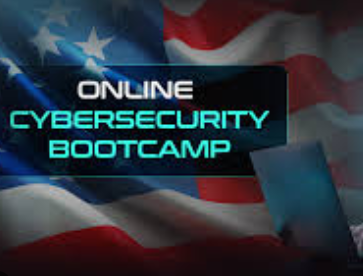Imagine thwarting a silent digital invasion before it strikes. A Cybersecurity Bootcamp ignites that vital spark in aspiring defenders.
Building Foundations in a Cybersecurity Bootcamp
Every Cybersecurity Bootcamp begins with core principles that anchor the journey. Participants dive into topics like access controls, which limit who can enter systems, and basic encryption methods that scramble data against prying eyes. These sessions use everyday scenarios, such as securing a home router from neighbors’ snooping. Instructors break down terms like confidentiality, integrity, and availability, the CIA triad that guides secure designs. Early modules include quizzes to test recall, ensuring concepts stick. This groundwork prevents common pitfalls, like leaving default passwords unchanged. As weeks progress, learners connect dots between theory and practice. Such a solid start equips minds for deeper explorations without confusion.
Mastering Hands-On Techniques in a Cybersecurity Bootcamp
Practical exercises define the pulse of a Cybersecurity Bootcamp. Trainees tackle labs simulating distributed denial-of-service attacks, where floods of traffic overwhelm servers. They deploy tools like Nmap for port scanning, mapping open doors in networks. Ethical guidelines shape these drills, stressing consent and minimal impact. A common task involves crafting a secure email policy to counter spear-phishing, tailored lures that fool even the cautious. Feedback loops from mentors refine techniques, turning errors into strengths. By midpoint, students lead mini-projects, such as hardening a web server against SQL injections that steal database contents. This immersion fosters muscle memory for real crises. Graduates emerge with portfolios showcasing their defenses.
Navigating Emerging Risks in a Cybersecurity Bootcamp
Threats morph daily, and a Cybersecurity Bootcamp mirrors that pace. Curriculum spotlights advanced persistent threats, stealthy intruders lingering for months. Learners dissect blockchain vulnerabilities, where smart contracts might harbor backdoors. Sessions on endpoint detection and response teach isolating infected devices swiftly. Real anonymized breach reports illustrate human factors, like insider leaks from weak training. Programs weave in regulatory overviews, such as HIPAA for health data safeguards. Adaptive modules adjust to fresh alerts, like firmware exploits in IoT gadgets. This vigilance trains foresight, helping spot patterns in chaos. Attendees leave attuned to the ecosystem’s shifts.
Cultivating Collaboration Within a Cybersecurity Bootcamp
Team dynamics thrive in a Cybersecurity Bootcamp setting. Joint simulations recreate cyber war rooms, assigning roles from analyst to communicator. Groups apply the OODA loop—observe, orient, decide, act—for swift threat triage. Debates on zero-trust models, assuming no user is inherently safe, sharpen arguments. Peers exchange tips on tools like Splunk for log correlation, uncovering hidden trails. Instructors facilitate inclusivity, drawing quiet voices into the fold. These bonds extend post-program, forming support webs. Collaboration underscores that solo efforts falter against coordinated foes. It molds professionals ready for interdependent roles.
Leveraging Key Technologies in a Cybersecurity Bootcamp
Technology integration elevates a Cybersecurity Bootcamp experience. Students configure IDS/IPS systems, intrusion prevention that actively thwarts probes. They explore API security, gating digital handshakes between services. Labs introduce machine learning basics for anomaly detection, flagging odd behaviors automatically. Compliance drills cover SOX for financial reporting integrity. Controlled sandboxes allow safe experimentation with exploits like buffer overflows. This toolkit exposure demystifies jargon-heavy fields. Participants weigh trade-offs, such as speed versus depth in monitoring. Proficiency grows through iterative use, building intuitive command.
Examples of Cybersecurity Bootcamps in the US
Several Cybersecurity Bootcamp programs operate in the US, each with distinct approaches. Springboard’s Cybersecurity Career Track runs online over six months part-time, covering topics from threat detection to cryptography, and includes preparation for CompTIA Security+ certification along with one-on-one mentorship. Its structure suits beginners through hands-on labs and career coaching. Fullstack Academy’s Cybersecurity Bootcamp offers live online classes for 13 to 21 weeks, focusing on tools like Wireshark and Metasploit for ethical hacking and malware analysis, with support for job search strategies. This format emphasizes interactive workshops and a capstone project. Evolve Security Academy’s remote bootcamp spans 20 weeks part-time, incorporating modules on incident response and threat hunting, plus apprenticeships with non-profits for practical assessments. It provides CompTIA Security+ vouchers and community access via Slack. More details appear at https://www.springboard.com/courses/cyber-security-career-track/, https://www.fullstackacademy.com/programs/cybersecurity-bootcamp, and https://www.academy.evolvesecurity.com/cybersecurity-remote-bootcamp.
Anticipating Tomorrow’s Challenges in a Cybersecurity Bootcamp
Forward-thinking defines a Cybersecurity Bootcamp’s edge. It probes quantum-resistant algorithms, future-proofing against code-breaking machines. Cloud migration strategies address shared responsibility models in AWS or Azure. Learners craft playbooks for ransomware variants that encrypt and exfiltrate. Ethical hacking ethics emphasize disclosure timelines to vendors. Global perspectives include varying laws like CCPA for consumer privacy. Mock tabletop exercises test scalability in enterprise simulations. This horizon-scanning builds resilience. Bootcamp alumni adapt seamlessly to innovations, viewing change as opportunity.
Applying Lessons Post-Cybersecurity Bootcamp
Real application follows a Cybersecurity Bootcamp naturally. Many start by volunteering audits for nonprofits, spotting misconfigurations in email gateways. They integrate password managers to enforce complexity rules. Routine habits include patch management, closing known exploits promptly. Community forums become sounding boards for dilemmas like BYOD policies. Forensics skills aid in piecing together incident timelines from artifacts. Growth paths branch into niches, from red teaming to blue team defense. Sustained effort yields deeper insights. This phase transforms novices into contributors.
Sustaining Growth After a Cybersecurity Bootcamp
Enduring benefits ripple from a Cybersecurity Bootcamp. It nurtures curiosity, prompting dives into whitepapers on homomorphic encryption for private computations. Networks yield collaborations on open-source projects like OSSEC for host intrusion detection. Self-assessments track progress against frameworks like CIS controls. Balancing life with learning prevents burnout in this demanding arena. Reflections highlight pivots, such as from coding to policy crafting. The field rewards persistence amid flux. Ultimately, it forges guardians who elevate collective safety.




